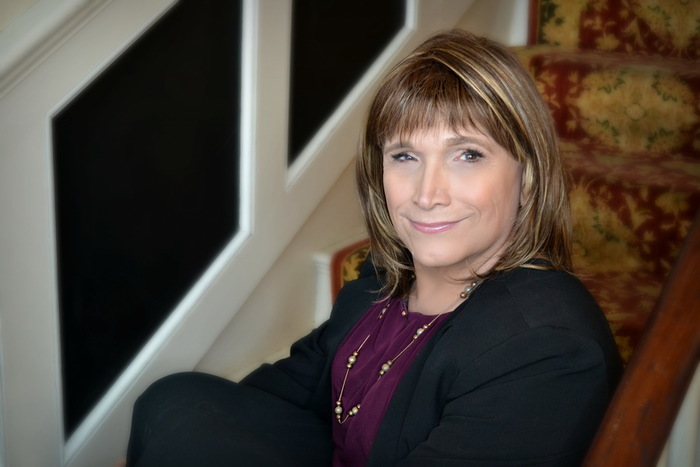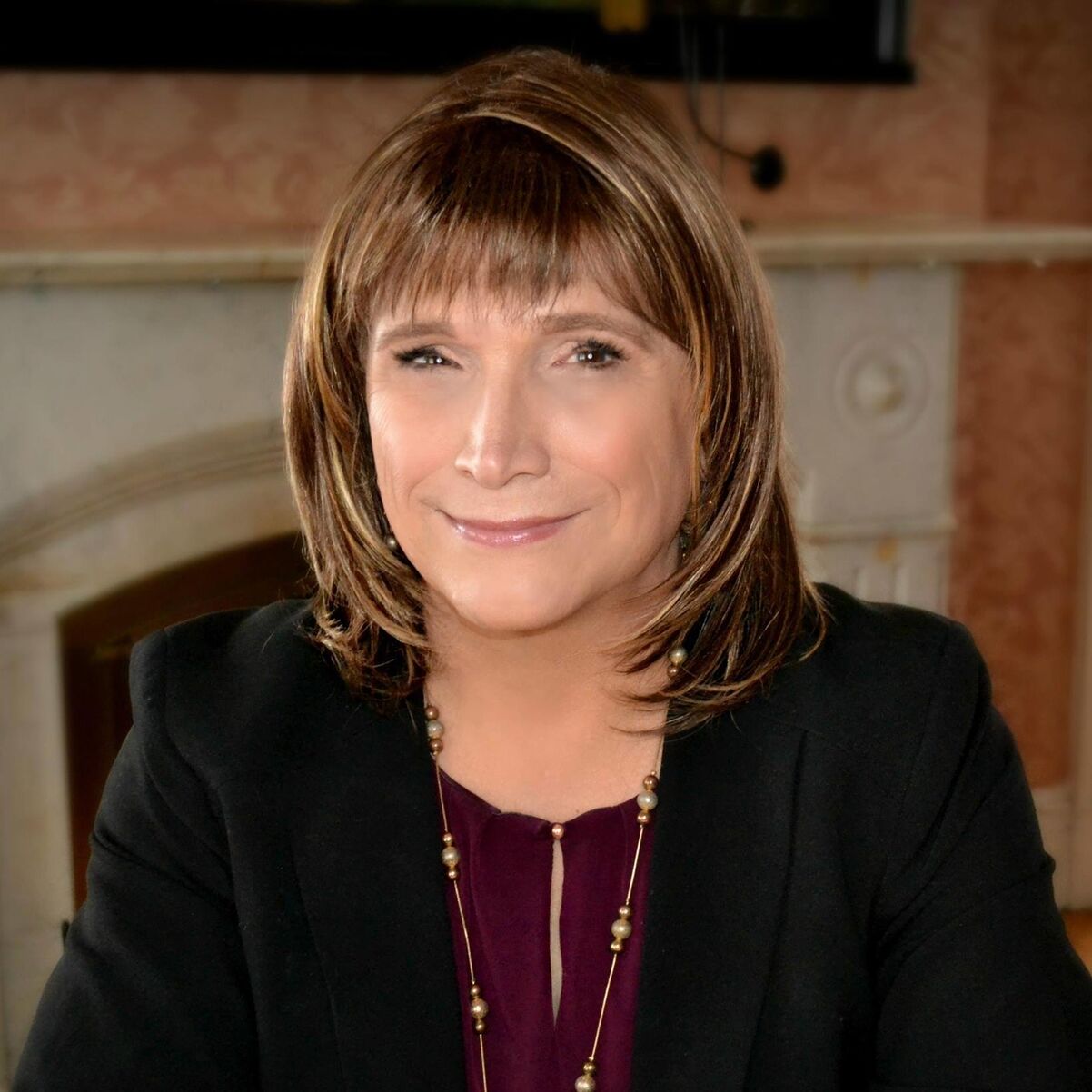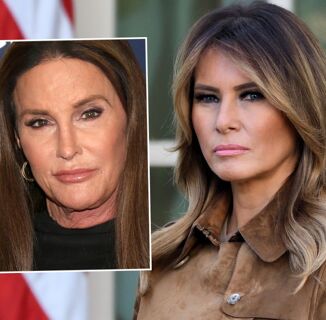Christine Hallquist has already made history. When she came out as transgender three years ago while head of the smart energy utility company Vermont Electric Cooperative, she was one of the first CEOs in America to transition on the job.
But after stepping down from that position in February, the 61-year-old is making the record books again. Hallquist is Vermont’s first-ever trans candidate for governor, facing off against environmental advocate James Ehlers and teenage Ethan Sonneborn in the Democratic primaries. Should she graduate to the general election, Hallquist may face a tough contest: Republican Gov. Phil Scott is one of America’s most popular governors, nabbing a 63 percent approval rating in a January Morning Consult poll.
But the businesswoman-turned-politician tells INTO she’s got the right stuff to go all the way. In a half-hour phone interview, Hallquist discusses how Vermont could benefit from her “collaborative” leadership style, why Donald Trump’s win pushed her to run for office, and what she’s learned from Virginia delegate Danica Roem’s groundbreaking victory.

INTO: What inspired you to run for governor of Vermont?
Christine Hallquist: My life goal starting in about 2004 was to solve climate change. I became CEO of Vermont’s Electric Cooperative, which serves about a fifth of Vermont. I started working on that goal. At the time, Vermont Electric Cooperative was teetering on the edge of bankruptcy. Customers hated them — hated us. The state was ready to pull its certificate of public good. I have a great business background. One thing I know is that when you engage with employees, you can get miracles done.
So I pulled the employees together. I have a good business background but I only have about a 10 percent chance of success. But if we all work together, we can pull this off. In 2010, I found myself down at the Department of Energy. I responded to a meeting in Washington. I thought I was going to meet with two people. But I met with all the heads of the Department of Energy. There were about 25 people there. What they told me is that we were the most innovative utility in the country. We went from junk bond status to an A+ rated utility.
When I left two months ago, we were 96 percent carbon free. We were offering incentives to move away from fossil-based heating and cooling. And we did that without a rate increase for five years.
So basically we proved you can solve climate change and it doesn’t need to cost money.
But November 2016 changed everything for me. I’m going to start by saying that I come from privilege — and when I define privilege, I don’t mean money. I mean that I had two wonderful parents growing up. My father was a brilliant engineer and my mother was a great social activist who taught me a lot. When I was 24, I got married. I had three wonderful children, and I had an incredibly successful career. I moved to a beautiful place in Vermont with 19 miles of shoreline and three homes. You would think I had the perfect life.
But all that time, I was struggling with an internal secret. The internal secret became so intense for me that I had to reveal my truth — because I had not been true to my children. So I was willing to give up this dream and actually thought I was going to give up this dream, but then I decided to transition from male to female on Dec. 2, 2015.
For me, it was quite remarkable that Vermont welcomed me with open arms. I loved Vermont. I’d lived in Vermont for 42-plus years serving in all kinds of civic duties — from school boards and mental health boards to being moderator of a town meeting. My love was pretty strong before I transitioned, but after transitioning, it really sealed the deal.
When I looked at what’s happened over the last year and what’s happening to Vermont and the nation, I decided to dedicate everything I can to return America to a place where we’re focusing on improving rights for everything.
When you came out three years ago, why then? Why pick that exact moment in time to say, “This is who I am and this is who I have been my whole life?”
It goes back about 10 years before 2015. I started to have suicidal thoughts, and I’m not the type of person who has suicidal thoughts. That told me I couldn’t continue to live the way I was. In 2005, Vermont didn’t have transgender protections laws. I was sure I would be homeless, lose all my friends and family, and my job.
It took me about 10 years to make the transition. The first step was getting my spouse ready for it. That took a couple years of counseling. She knew I was transgender, but we were going to take the secret to our graves. We did several years of family counseling with my adult children. One daughter would Skype in from San Francisco. My son would Skype in from Saratoga. My other daughter from Saratoga would be there with Pat and I.
Allegedly our family counseling was to help everybody be ready for my transition, but toward the end the three years of counseling, it was so awesome how my children were working out issues with each other. We became so much closer as a family as a result.
But the biggest thing was getting myself ready. In 2010, I met a transgender counselor. She asked me what my goal was. I said, “I’m going to transition. But I’m not going to transition until I’m ready.” As a man, I was a strong leader — confident and pretty fearless. But Christine? She was full of shame. I needed to be as strong a leader as Christine as I had been. We spent five years working on that.
That’s why I chose December of 2015 to transition — I was finally ready. I started preparing the community, the state, and my company back in July for this transition. I wanted to make the biggest impact for the LGBTQ community. Because of my job and the work I had done, I had relationships with the news media. I gave the story to two of Vermont’s best newsfolks and told them I would tell my story — but only if they agreed not to release it until Pride week. I did.
I chose Pride week to release that story and then I marched in the Pride parade. I had 13 other CEOs from Vermont companies march with me. The support I received was incredible.

You’re the first transgender woman to mount a bid for governor in the state. If elected, you’d be the first trans person in any state to hold the office of governor. What does that milestone mean to you?
I’m running for what I can do for the state of Vermont and the people of Vermont. I’m honored and humbled to continue to blaze a trail. I was among the first CEOs in the country to transition on the job [editor’s note: Martine Rothblatt came out while CEO of WorldSpace in 1994]. I didn’t know that until I started preparing. I’m not doing anything to make a point. It’s about me continuing to live honestly and authentically. I’m a very proud and out trans woman, and I will do a lot for Vermont. I’ve learned that blazing a trail does a lot for others.
I’ve received praise for all over and have helped people from all over, so it really is about what I can do for others.
You mentioned the impact of climate change on your platform. What other issues are central to your campaign?
The top issue for the campaign is rural economic development. Two-thirds of Vermont is rural. In my previous job, I was also the head of the strategy and technology advisory committee which serves all of rural America. What we’re observing is increasing rates of poverty and flights to the city. When that happened in the ’30s, it was happening because rural Americans didn’t have electricity. We electrified rural America, and lo and behold, rural America grew again.
The same thing is happening today with the digital divide. What I would do is get every home and business connected with fiber optics in Vermont, so rural Vermonters could enjoy the same speeds that New York and Tokyo do. That will create a compelling reason for young people and entrepreneurs to move to Vermont. I talk to many folks who want to move to Vermont. They want to move to Vermont because we are such a great state. We’re such a loving state, and we have some of the best education in the country. But if you can’t get connected, you’re not coming.
I think that will open up an opportunity to for us to restore our communities and even grow our communities.
I will continue to work toward single-payer healthcare. The United States spends 18 cents of every dollar on healthcare. European countries spend nine cents. That will require unifying with other like-minded states. We need form unity not only to achieve single-payer healthcare but also to push back on some of the headwinds from Washington. I will continue to do the great work we’ve done on climate change and ensure every child receives a quality public education.
You’re coming to this as the CEO of Electric Cooperative. There have been a number of outsider candidates in recent years — most notably our president. Why do you feel that you have the background to lead Vermont?
I think I have demonstrated that I am a visionary leader with the fact that I’ve set these goals to solve one of our biggest problems. Being a regulated utility in a cooperative means a couple things. First of all, my leadership style is very collaborative. I believe 95 percent of employees get every day to do a good job. Our current governor believes in command and control. He barks orders from Montpelier. I’ll pick on education for a minute. He came up with some random numerical goals and beat up the teachers’ unions.
I know that the teachers have the solutions, and I would work with them to develop the solutions just like I do with my employees. When you ask people to help, they give their emotional energy. If you beat them up, they’re not going to help you. It’s pretty common sense in my view.
I do think the command and control leadership style is great for power outages but it’s antiquated as far as how you solve problems in our current world.
I love Vermont, and Vermont has a history of pulling together in a collaborative way. Sometimes our leadershipour governors, I should saydon’t necessarily do that. What Vermont needs is a leader more than a governor.
Vermont’s history is interesting. For a really long time, Vermont has been on the forefront of progressive leadership — whether its legalizing civil unions, pushing marriage equality, or legislating trans rights. Why do you think the state has occupied that kind of position?
Right from the beginning, Vermont has been a leader in civil rights: with women’s suffrage and racial justice issues. When you come to Vermont, you get absorbed by its collaborative culture.
I’ll tell you now, it appears like Vermont is an oasis in this country. We’ve always been a pretty darn loving state, ever since we formed. We haven’t deviated from that. That’s why I’m running. But two weeks ago, the Vermont Republican Party sent out a flier and a press release saying we needed to “Make Vermont Great Again” and they pulled from the GOP rhetoric. I’ve been telling Vermonters ever since I started running: We’ve got this great bubble here, but that bubble is being threatened.
In the past couple months, we’ve seen white supremacists spreading fliers around and spraying graffiti. That just didn’t happen in Vermont. We’re not insulated from the rest of America.
I’ll be the leader who makes sure we turn that tide backward.
The past year has been a historic one for LGBTQ candidates across the country — with more gay, lesbian, bisexual, and transgender people running for office (and winning) than ever before. Why do you think this seismic shift is happening?
I believe the reason I’m running is the reason many folks are running. I was pretty apathetic from a political standpoint up until Nov. 9. We had Obama in office. Like many folks, I never believed America would do what it did on [election day]. What you’re seeing all across the country is not just historic numbers of LGBTQ candidates but historic numbers of women entering the race.
Let’s put it this way: I believe that 2018 will be one of our most historic years in America. I believe our children and our children’s children will look back and say: “That’s the year we made history.”
What was your reaction to Danica Roem’s victory in last November’s election — particularly given that she defeated one of the nation’s most notorious transphobes?
I’ll be meeting with Danica. I was so impressed with the way she handled that race. When you talk about someone paving the way, she handled the issues with such grace and character. That’s exactly how I want to handle things. She stayed focused on the issues. It was all about fixing Route 28. For me, it’s about the same thing. I want to focus on the issues that affect Vermont.
Her win reaffirms my faith in the goodness of people. I knew that before, but it reaffirms that. Stay positive and stay hopeful, and people will see through all the other nonsense.
How have Vermonters reacted to your historic campaign?
I’ve gotten an extremely positive response. It continues to affirm what a great state Vermont is.
The moment I made the decision to run for governor — I was at a women’s march run by the youth on Jan. 20 this year. There were these four young women, high school seniors. They called themselves “Muslim Girls Making Change.” They were doing slam poetry about what it’s like to be Muslim in America. I started crying. That’s where I made my decision to run for governor. I said, “I have to jump in and fight for these young people.”
Many people over the years have told me I should run for governor. But you hear that stuff and you think, “Well, I’m not sure how true that is.” But I put out a feeler and I tested it with the press. The next several weeks were a whirlwind. What folks have told me is that they’ve never seen a candidate get so much press — and it’s been positive press.
Vermont has been responding in the most positive way I could have ever imagined when I started out on this journey. We’re the state that can show America how to lead.
Note: This interview has been edited and condensed for clarity.
Help make sure LGBTQ+ stories are being told...
We can't rely on mainstream media to tell our stories. That's why we don't lock our articles behind a paywall. Will you support our mission with a contribution today?
Cancel anytime · Proudly LGBTQ+ owned and operated
Read More in Impact
The Latest on INTO
Subscribe to get a twice-weekly dose of queer news, updates, and insights from the INTO team.
in Your Inbox













